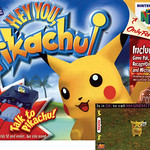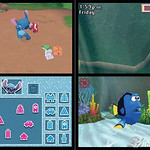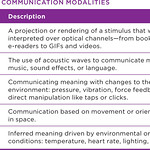Design Beyond Devices

Creating Multimodal, Cross-Device Experiences
Your customer has five senses and a small universe of devices. Why aren’t you designing for all of them? Go beyond screens, keyboards, and touchscreens by letting your customer’s humanity drive the experience—not a specific device or input type. Learn the techniques you’ll need to build fluid, adaptive experiences for multiple inputs, multiple outputs, and multiple devices.
Who this book is for
- Designers navigating the complexities of cross-channel design, driving cohesion across web, mobile, and other device experiences.
- Designers working specifically on heavily multimodal experiences like Amazon’s Echo devices, Google Home, Apple Vision Pro, Oculus Quest, televisions, smart watches, video games, theme parks, and automotive experiences.
- Entrepreneurs and inventors looking to improve their user-centered thinking techniques with tangible frameworks they can apply to product design and engineering efforts immediately.
- Students looking to understand the future potential of human-centered technology
Key takeaways
- Frameworks for researching, documenting, and understanding human behavior and context
- An overview of all input and output modalities mapped against current technologies and accessibility considerations
- Frameworks for delivering complex systems like notifications, interruption models, and multimodal design systems
- Direct guidance on deliverables needed to deliver advanced cross-channel designs
- Ethical frameworks for querying your potential work against potential human impact, and strengthening your product designs in advance to accommodate risks
Your customer has five senses and a small universe of devices. Why aren’t you designing for all of them? Go beyond screens, keyboards, and touchscreens by letting your customer’s humanity drive the experience—not a specific device or input type. Learn the techniques you’ll need to build fluid, adaptive experiences for multiple inputs, multiple outputs, and multiple devices.
Who this book is for
- Designers navigating the complexities of cross-channel design, driving cohesion across web, mobile, and other device experiences.
- Designers working specifically on heavily multimodal experiences like Amazon’s Echo devices, Google Home, Apple Vision Pro, Oculus Quest, televisions, smart watches, video games, theme parks, and automotive experiences.
- Entrepreneurs and inventors looking to improve their user-centered thinking techniques with tangible frameworks they can apply to product design and engineering efforts immediately.
- Students looking to understand the future potential of human-centered technology
Key takeaways
- Frameworks for researching, documenting, and understanding human behavior and context
- An overview of all input and output modalities mapped against current technologies and accessibility considerations
- Frameworks for delivering complex systems like notifications, interruption models, and multimodal design systems
- Direct guidance on deliverables needed to deliver advanced cross-channel designs
- Ethical frameworks for querying your potential work against potential human impact, and strengthening your product designs in advance to accommodate risks
Testimonials
The future is multimodal because we are multimodal. Here is an essential guide to unleashing the potential within that symmetry.
Bill Buxton, Partner Researcher at Microsoft Research and author of Sketching User Experiences
This book harnesses our very selfish desire to make cool things into the ability to benefit clients, stakeholders, customers, and society itself. Chock-full of insightful conceptual models and practical applications, designers will be both inspired and prepared.
Sam Ladner, PhD, author of Practical Ethnography: A Guide to Doing Ethnography in the Private Sector and Mixed Methods: A Short Guide to Applied Mixed Methods
A must-read for anyone wanting to understand the richness and complexity of how users move fluidly between different forms of input, and how to ethically elevate that experience. The attention Platz has given to a manageable structure for ethical reasoning around the problems this tech should be solving is outstanding.
Per Axbom, co-host of UX Podcast and author of Digital Compassion
Using simple frameworks and questions, Platz creates a practical playbook that challenges teams to understand the problem, reflect on the design constraints, focus on people, and avoid the traps of exclusion in a multimodal world.
Jose Coronado, Vice President of Global Design Operations, JPMorgan
Interface design may seem like a solved problem. However, fifteen minutes with this book will show you how many exciting design problems you still have left to solve. Your inseparable guide to multimodal design.
Andy Budd, founder of ClearLeft and organizer of UX London
Table of Contents
Foreword by Erika Hall
Chapter 1: Creating the World We Want to Live In
Chapter 2: Capturing Customer Context
Chapter 3: Understanding Busy Humans
Chapter 4: Activity, Interrupted
Chapter 5: The Language of Devices
Chapter 6: Expressing Intent
Chapter 7: The Spectrum of Multimodality
Chapter 8: It’s a (Multimodal) Trap!
Chapter 9: Lost in Transition
Chapter 10: Let’s Get Proactive
Chapter 11: Breathe Life into the Unknown
Chapter 12: From Envisioning to Execution
Chapter 13: Beyond Devices: Human + AI Collaboration
Chapter 14: Beyond Reality: XR, VR, MR, AR
Chapter 15: Should You Build It?
FAQ
These common questions and their short answers are taken from Cheryl Platz’s book Design Beyond Devices: Creating Multimodal, Cross-Device Experiences. You can find longer answers to each in your copy of the book, either printed or digital version.
- What exactly is multimodal design, anyway?
We define it in Chapter 1, “Creating the World We Want to Live In,” but think of it this way: multimodal experiences are experiences that can engage multiple human senses. Devices that let you speak or touch to make a selection. Twenty years ago, your PC (generally) only engaged you visually, and you only engaged your PC with touch. You have many more options today (see Chapter 7, “The Spectrum of Multimodality,” to fully understand all those options), but those options bring a lot more complexity to the design party [see Chapter 8, “It’s a (Multimodal) Trap!”].














